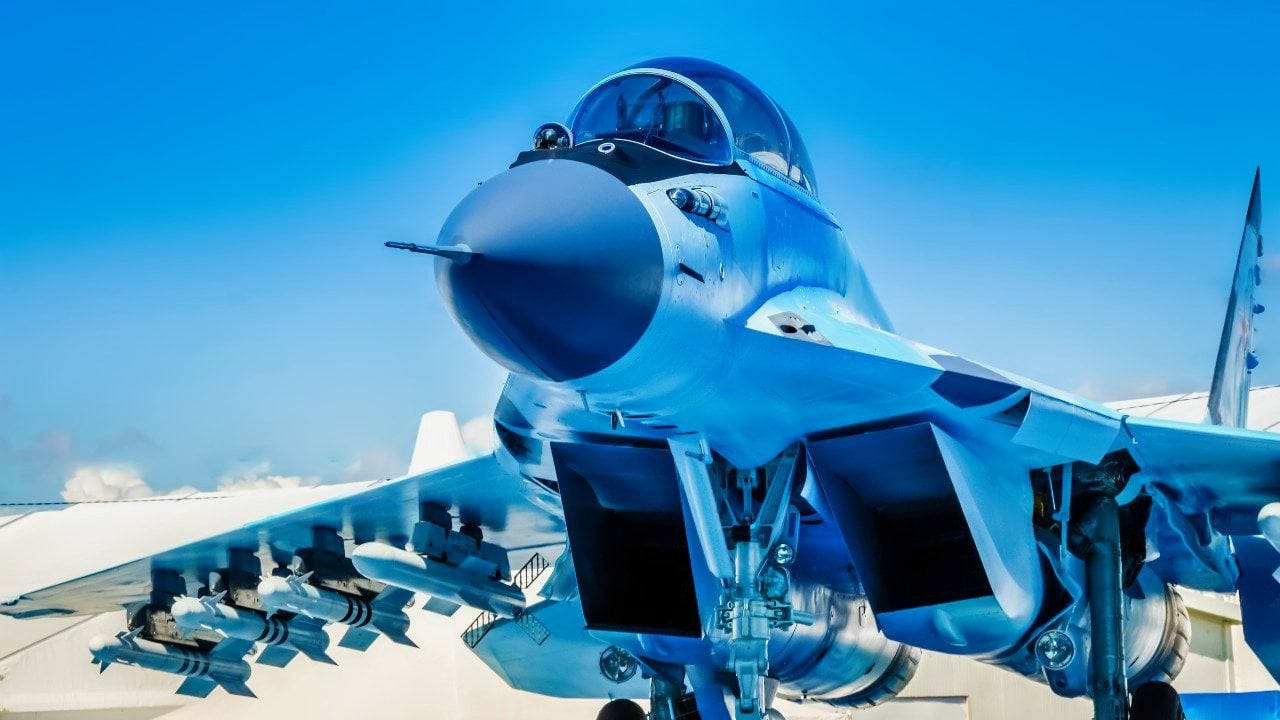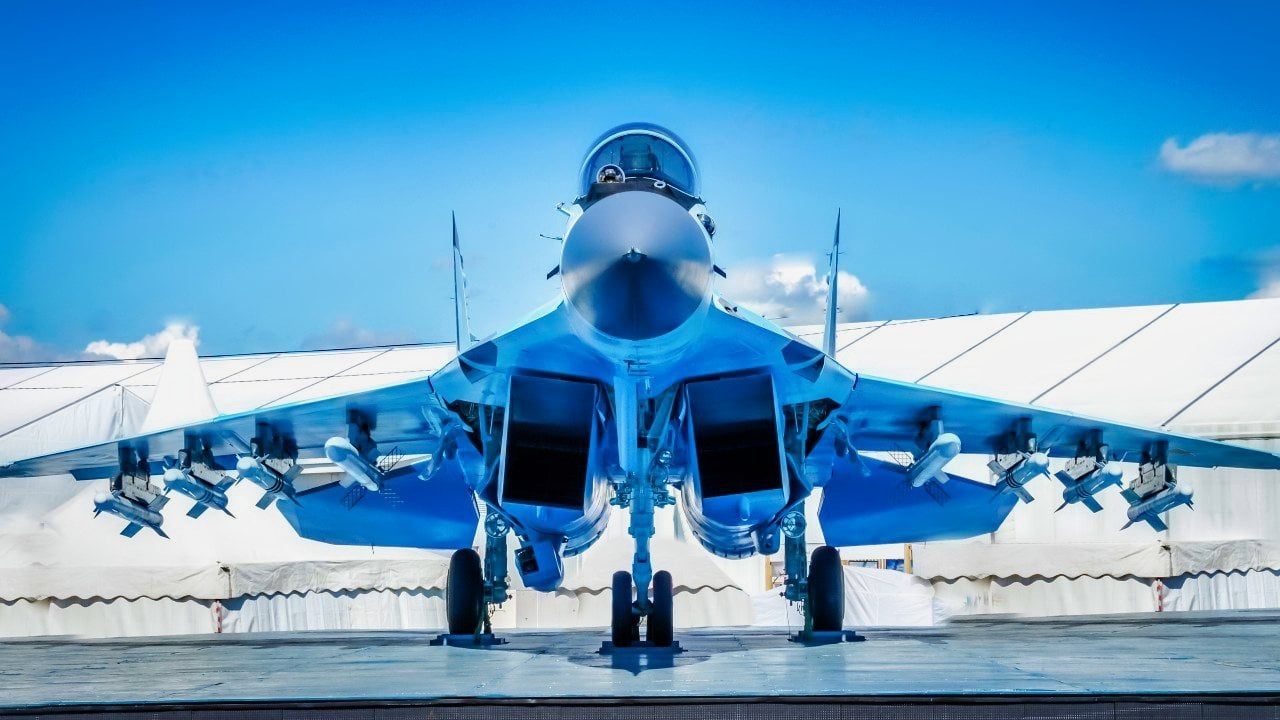Russia's MiG-35 Nightmare Can Be Explained in 4 Words
The Russian MiG-35, hailed as a "4++ generation" fighter, has proven to be a massive disappointment for Moscow. Despite its promising debut in 2007, only six units have been built, far short of the planned 37. Its limited combat experience, reliability issues, lack of export sales, and inferior components compared to rivals have tarnished its reputation.
What You Need to Know: The Russian MiG-35, hailed as a "4++ generation" fighter, has proven to be a massive disappointment for Moscow. Despite its promising debut in 2007, only six units have been built, far short of the planned 37. Its limited combat experience, reliability issues, lack of export sales, and inferior components compared to rivals have tarnished its reputation.

-Moreover, overhyped marketing has exposed its flaws, making it an unattractive option for both domestic and foreign buyers.
-Without foreign interest or significant improvements, the MiG-35 is unlikely to recover its standing or meet its original aspirations.
Top 5 Reasons Russia’s MiG-35 is a Total Failure
Russia’s MiG-35 (NATO designation “Fulcrum-F”) has been billed as a Fourth-Generation-Plus-Plus-Plus” warplane by its designers. First unveiled at the Aero India airshow in 2007, the Fulcrum-F was meant as a challenger to the Boeing F/A-18E/F Super Hornet, the Eurofighter Typhoon, the Dassault Rafale, the General Dynamics F-16 Fighting Falcon, and the Saab JAS 38 Gripen.
But by 2011, obvious failures in its designs became too apparent for anyone—including the Russians—to ignore.
Heck, the Russians had intended to build a minimum of 37 units of the MiG-35. Since 2007, they’ve built a paltry six. The MiG-35 is an overhyped, overrated, underperforming mess-heap of a plane that not even the Russians have full faith in. Below are five reasons for why the MiG-35 is a massive failure for Russia.
The Top Five Reasons for why the MiG-35 is a failure are, from least to greatest):
5. Limited Combat Experience
Despite being embroiled in what Moscow routinely refers to as an “existential war” with neighboring Ukraine, the Russians have been holding back many platforms that they have billed over the years as being revolutionary. The T-14 Armata Main Battle Tank (MBT), the Su-57 fifth-generation warplane, and the MiG-35 have all been held back from the heavy fighting.
This partly borne out of fear of the expense of losing these systems in combat and the difficulty that would arise in trying to quickly, reliably replace these complex and expensive systems during such an onerous war.

In the case of the MiG-35, however, this limited combat experience has only served to negate its attractiveness as a potential foreign export model. Which brings us to the next failure of the MiG-35 program.
4. No Exports for You!
What self-respecting military—even a relatively small one—would want to purchase a plane that is both expensive, overhyped, and has yet to be used in real war (even though the country that built is involved in a major conflict)?
That’s the position the Russians now find themselves in because of their failure to deploy the MiG-35 in any serious way in Ukraine. Without foreign export demand, the Russians will not mass produce these planes nor will they have the funding needed to continue (let alone grow) the MiG-35 fleet (meaning the cost will outweigh the benefits of the program).
3. Unreliable MiG-35
Back in 2011, the first problems with the MiG-35 started to be noticed. Specifically, there were some real problems that arose with the engines and radar. Word got out that the Russians were struggling with the radar and engines—two primary, basic systems for any bird—and that made it an even less palatable system for possible purchasers.

Since 2011, the MiG-35 has not improved either its technical specifications or its reputation.
2. Bad Components
Another issue affecting the MiG-35 is the concern that the systems supporting the plane are inferior to their foreign rivals. Specifically, that the overall platform is an inferior product compared to the American F-35 Lightning II.
To be fair, though, the MiG-35, while an advanced plane, is likely not meant as a direct challenger to the F-35 because it’s not a fifth-generation warplane like the F-35 is. A better comparison for the MiG-35 would be the new F-15EX Eagle II which is a fourth-generation-plus warplane that the United States is starting to deploy.
Yet, even when compared to the F-15EX Eagle II, the MiG-35 is not as good.
1. All Flash & No Substance on MiG-35
The biggest flaw of this plane is marketing overhype that it experienced from the start of its existence. This is likely because the MiG-35 was one of the first serious planes that Russia developed as part of its post-Soviet era revitalization campaign.
Moscow needed to play up the capabilities of the plane both to enhance Russia’s flagging prestige as well as to sell the plane. But by overhyping the MiG-35 and it clearly not living up to even a modest form of expectations, the Russians created a horrible cycle where expectations were never met which, therefore, reduced overall interest in the plane.
Because of these issues, the MiG-35 will never live up to the expectations of the designers. It will never be a top-selling warplane nor will it make any type of return in terms of investment or military capability.
About the Author
Brandon J. Weichert, a National Interest national security analyst, is a former Congressional staffer and geopolitical analyst who is a contributor at The Washington Times, the Asia Times, and The-Pipeline. He is the author of Winning Space: How America Remains a Superpower, Biohacked: China’s Race to Control Life, and The Shadow War: Iran’s Quest for Supremacy. His next book, A Disaster of Our Own Making: How the West Lost Ukraine, is available for purchase wherever books are sold. Weichert can be followed via Twitter @WeTheBrandon.
Image Credit: Creative Commons.


